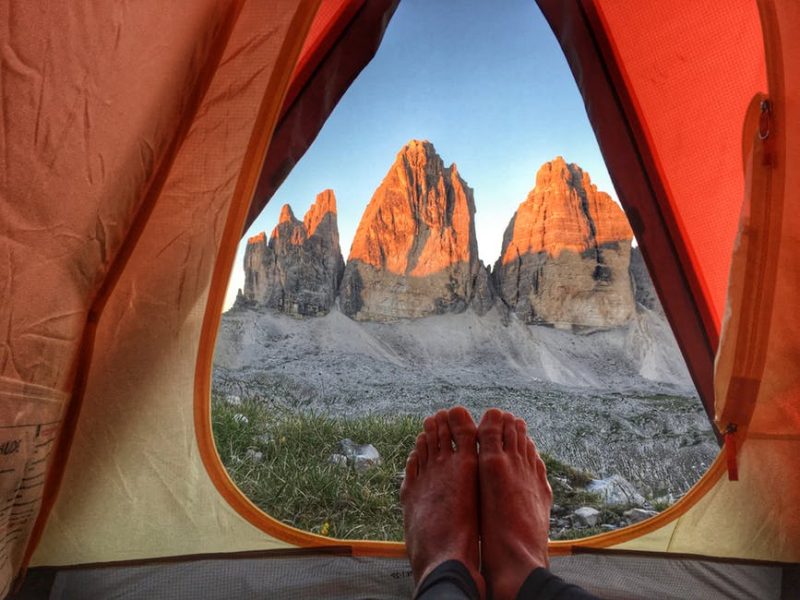How to choose the perfect camping spot – getting it wrong just hurts

Finding the right camping spot is crucial when it comes to a successful camping or backpacking vacation. You know that choosing one is not as simple as it sounds, and you can’t settle your camp wherever. There are many things to consider when picking the best spot to set up a tent. Your home base in the wilderness is where you want to feel safe and secure so making sure you have the right pitch is important.
Depending on the time of the year and what your preferences are, you need to follow some rules that will help you choose the best camping spot ever.
Ground surface

It’s obvious that where you choose to sleep during your camping adventure is going to is going to make all the difference to whether the whole experience is a great one or not. First thing you need for a good night sleep is a flat ground surface where you can pitch your tent. Waking up and sliding down inside the tent is not what you want, right? Choose an area of flat ground, with sand or grass if possible. If not, regular soil is fine. The important thing is that the surface is flat.
Shade
The second most important thing when choosing a camping spot is a shade. It’s not obligatory to have some form of shade over your tent during the whole day, but in the mornings you would probably prefer to wake up more or less fresh. If the sun is over your campsite from the early morning, you’ll wake up early, sweating, and not in such a great mood. If in a desert and there are no trees around, consider bringing an extra tarp that you can use to create some shade.
Look what’s above you

Be aware of all the hazards that might be situated above your tent. For example, if you see a dead branch hanging from a nearby tree, is it going to fall on you with the first wind. Better to play safe by avoiding the risk and moving a little bit further away. Loose rocks are also a danger that you need to be aware of.
Look what’s around you
When choosing a perfect camping spot, it’s not enough to look above only. You also need to check what’s surrounding you. If there’s a river or a spring nearby the place you you’re thinking of pitching the tent, think twice. Camping on the edge of a river often means a lot of bugs, a potential for flooding, and the possibility of thirsty wild animals walking through your camp. It’s ok to be relatively close to a water source, but not too close. Settle your camp behind a big boulder or a massive tree if there’s a strong wind in the forecast. Also, if you see traces of someone else’s campsite, use the same spot. That way you cam save yourself some effort and be more nature-friendly at the same time.
Privacy
Camping neighbors to share a bottle of rum with around the campfire can be a cool thing, but there are times when you want your privacy. Being far from the camping party can be a real pleasure and can remind you why you needed the wilderness trip in the first place. It doesn’t mean you need to hike for 10 miles more to find your perfect spot, though. It’s easy enough to get off the beaten path without overexerting yourself or your car.
Space
So according to the list, you’re looking for a comfortable ground surface, in a safe location, with some shade, and plenty of privacy. Now it’s time to look for the perfect space. If you travel alone with a small tent, then you won’t need too much space. But, when it comes to a big crew, you’ll need space for the tents, a kitchen area, and maybe a playground, too. Depending on the needs of your group, you need to choose a big and comfortable space. Camping in the wilderness doesn’t mean giving up on your everyday needs. Stay safe! Good luck!
If you have any comments then please drop us a message on our Outdoor Revival Facebook page
If you have a good story to tell or blog let us know about it on our FB page, we’re also happy for article or review submissions, we’d love to hear from you.
We live in a beautiful world, get out there and enjoy it. Outdoor Revival – Reconnecting us all with the Outdoors.
